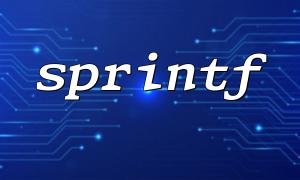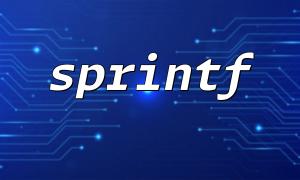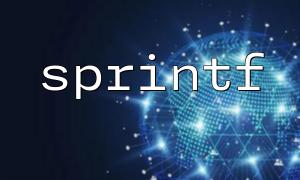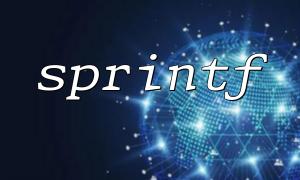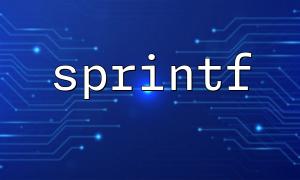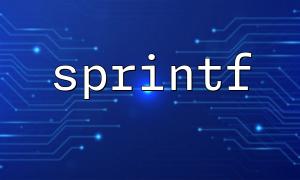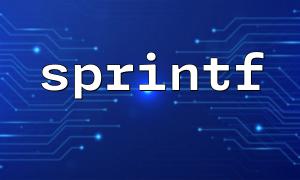In PHP, the sprintf function is often used to format strings, which gives us the flexibility to insert variables into specific locations in a string. Sprintf is very useful when generating dynamic content, especially when building XML content, which can improve the readability and maintenance of the code.
This article will use a simple practical example to introduce how to use PHP's sprintf function to dynamically generate XML content and parse it in detail.
printf and sprintf are both functions used in PHP to format strings. The difference is:
printf directly outputs the formatted string.
sprintf returns a formatted string without direct output.
The basic syntax of the sprintf function is as follows:
sprintf(string $format, mixed ...$values): string
$format is a format string that contains one or more formatted placeholders, usually starting with % followed by a specific format character.
$values is a variable that needs to be inserted into the format string.
Suppose we need to generate a simple XML file containing user information, such as username, email address, and registration date. We can dynamically insert this information through the sprintf function.
<?php
// User Information
$username = "john_doe";
$email = "[email protected]";
$registration_date = "2025-04-23";
// use sprintf Function generation dynamics XML
$xml_template = '<?xml version="1.0" encoding="UTF-8"?>
<user>
<username>%s</username>
<email>%s</email>
<registration_date>%s</registration_date>
<profile_url>https://gitbox.net/users/%s</profile_url>
</user>';
// use sprintf Fill placeholder
$xml_content = sprintf($xml_template, $username, $email, $registration_date, $username);
// Output generated XML content
echo $xml_content;
?>
XML template: We define an XML string template that contains several placeholders %s , representing the username, email, registration date, and username parts of the personal homepage link.
sprintf function: Use sprintf to insert actual variables (such as $username , $email , etc.) into the positions of these placeholders.
Generate dynamic XML: Finally, the $xml_content variable will contain the generated XML content, which can be saved as a file or output directly.
<?xml version="1.0" encoding="UTF-8"?>
<user>
<username>john_doe</username>
<email>[email protected]</email>
<registration_date>2025-04-23</registration_date>
<profile_url>https://gitbox.net/users/john_doe</profile_url>
</user>
In actual development, we may encounter situations where user input contains special characters (such as < , > , & etc.) that need to be escaped in XML. PHP provides the htmlspecialchars function to handle these special characters.
We can escape these variables when generating XML:
<?php
// User Information
$username = "john_doe";
$email = "[email protected]";
$registration_date = "2025-04-23";
// Escape special characters
$username = htmlspecialchars($username, ENT_QUOTES, 'UTF-8');
$email = htmlspecialchars($email, ENT_QUOTES, 'UTF-8');
$registration_date = htmlspecialchars($registration_date, ENT_QUOTES, 'UTF-8');
// use sprintf Function generation dynamics XML
$xml_template = '<?xml version="1.0" encoding="UTF-8"?>
<user>
<username>%s</username>
<email>%s</email>
<registration_date>%s</registration_date>
<profile_url>https://gitbox.net/users/%s</profile_url>
</user>';
// use sprintf Fill placeholder
$xml_content = sprintf($xml_template, $username, $email, $registration_date, $username);
// Output generated XML content
echo $xml_content;
?>
In this way, we ensure that the generated XML will not cause errors due to special characters, and ensure the validity of the XML file.
In PHP, the sprintf function provides a very convenient way to dynamically generate XML content. By combining formatted strings and actual variables, various complex XML structures can be created flexibly. Combining functions such as htmlspecialchars to process special characters can ensure that the generated XML content can be used normally in different scenarios.
Hope this article helps you understand how to use PHP's sprintf function to generate dynamic XML content. This method allows you to process dynamic data more flexibly and generate XML files that meet the requirements.
Related Tags:
XML


